Last updated on August 3rd, 2023

Today you’ll learn how to craft an effective CRM strategy to bring more flow to your business, get the most out of your CRM tool, and keep customers happy!
When going somewhere you’ve never been before, you probably rely on directions to guide you.
That’s because sheer “luck” won’t bring you to your destination — you need concrete steps to get there.
Your business works the same way. To reach your goals, you need tools to help you and a sound-proof strategy that you and your team can stick to long-term.
Your approach to customer relations can mean the difference between becoming a successful enterprise or a struggling small business.
This guide will help you create and implement a new, more potent, CRM strategy.
- What is a CRM Strategy & Why is It So Essential?
- What Happens if You Don’t Have a CRM Strategy?
- How CRM Strategies Differ Amongst Business Sizes
- 4 Ingredients of a Superb CRM Strategy
- 5 Must-Do’s Before Creating a CRM Strategy
- How Do You Create a CRM Strategy?
- 17 CRM Tools for Your CRM Strategy
- The Top CRM Tool For Your New Strategy

VipeCloud is the only Automation tool your small business needs to
be the hero to your customers.
With Email, Texting, Social, Suites, Chat, Stories, Video Email & Sign Up Forms fully built-in, we provide you with the perfect platform to grow your business.
15 Day Free Trial – Get started risk free. No CC needed.
What Is A CRM Strategy & Why Is It So Essential?

A CRM strategy is when you use data to create a personalized experience for your leads and customers — one that’s organized and at least partially automated.
Data is used within CRM software for more automated and personalized sales, marketing, and operations.
A successful CRM strategy attracts, satisfies, and retains customers in a way that helps your company reach its goals.
But it’s not too one-sided — all parties involved benefit from the strategy in place.
How?
A CRM’s automation tools help you scale.
And a CRM’s data and contact management helps you stay more personalized as your business grows.
Before a business leader invests in a CRM, they should consider their strategy first.
Crafting the perfect CRM strategy starts with your product or service, market needs, company & customer pain points, and much more.
Once you take a holistic audit of your business in this fashion, it gives more fuel for your tools (i.e., CRM software) to deliver exceptional results!
Benefits Of A CRM Strategy
When a CRM strategy is in place, it gives company members top to bottom a blueprint to work with.
With everyone understanding their role relative to each other and their customers:
Your company is a lot more in sync, and there are fewer hiccups.
You’re also bound to see more satisfied customers, more organization, revenue growth, and brand loyalty!
Forbes reported that 73% of consumers say a good experience influences their brand loyalties.
Now, does this mean your CRM strategy is a “set it and forget it” type of approach?
Not at all.
Like anything learned, your organization needs to be reminded, trained, and coached on customer management expectations.
Even in sports, a great football coach will have his team run the same play repeatedly until they can do it in their sleep. It’s just a way of ingraining new behavior so that it becomes second nature in real-time.
When you ingrain your customer relationship management strategy into your company’s culture, you’ll start to see the brand loyalty you’ve always hoped for.
But what happens when you don’t?
What Happens If You Don’t Have A CRM Strategy?
CRM strategy is like the foundation of a company. Without it, attracting and retaining customers in the long term could be halted.
Companies without a CRM strategy tend to experience the following pain points in their operations:
- Dissatisfied customers
- High customer churn rate
- Lack of automation or no automation at all
- Fluctuating success (numbers look good one month, but poor the next)
If you’re an SMB (Small or medium-size business), your business needs to keep as much of its customer base as possible because it will lead to more revenue and less money spent on marketing.
The truth is, if you’re an SMB, you can’t afford to make the same mistakes the big players make, i.e., enterprise companies.
Next, we’ll explore how these business types go about CRM strategy.
How CRM Strategies Differ Among Business Sizes
Business size has a lot to do with how your CRM strategy goes about.
Small & Medium-Sized Businesses:
- Closer to the customer
- Often referral based
- less room for error
- Less technology on average
- Fewer employees
- More closer to the customer
Enterprises:
- Larger bureaucracy with more votes before a decision is made (Publicly traded, investors, executive board, etc.)
- Can rely on brand recognition
- Easier to fall into poor customer service without getting harsh blow-back
- CRM strategy takes longer to implement
- More Employees
- Bigger marketing budgets
As you can see, enterprises can rely on brand recognition, bigger budgets, and other resources to grow continually (and even take profit losses in many cases) year in and year out.
But SMBs aren’t on the same boat and can’t take the same risks as enterprises.
Enterprises can have poor customer-centric practices here and there, and it usually won’t leave a scratch.
SMB’s on the other hand?
Need to be sharper.
Like most of our customers here at VipeCloud, you likely fall under the SMB category and could benefit from some CRM strategy fundamentals.
4 Ingredients Of A Superb CRM Strategy
Now let’s cover 4 ingredients that the best SMBs use in their CRM strategy.
Customer-Centric Minded Business
A customer-centric strategy is a strategy focused on designing the best experience for the client — and making your ideal client profile the center of a business’s philosophy, operations, and planning.
Being customer-minded will help you come up with the right ideas your market benefits from.
A customer-minded approach will show in how your company deals with customer feedback and even the marketing message you put out.
Knowing your customer’s needs trickles into knowing your business needs.
Once you’re clear on all of these facets, picking the right CRM software for you becomes a piece of cake.
Automation
Successful businesses automated as many tasks as possible.
Automation helps operations run faster and smoother — it can also work much longer, harder, and faster than a human.
As you understand your customers, your CRM strategy should have automation to make tasks as simple as possible.
This includes automating sales funnels using tools like auto-response.
Automation benefits your company and customers, which is the core of what CRM strategy is all about.
Prospect & Customer Reporting
After creating a strong CRM strategy, you must utilize the necessary data that tells you how your new approach is working.
Why?
Here’s an example:
Let’s say you’ve decided to do email campaigns instead of social media ads to drive leads.
You can use your CRM tool to track how your email marketing ROI is looking after 1 week, 2 weeks, a month, and so on.
Reporting helps you tweak your approach as needed.
Customer Feedback
As time goes on, your CRM strategy will take new forms and shapes, mainly because there are always new things on the horizon (like your market changing).
One of the cornerstones of making intelligent business decisions to your CRM strategy is listening to what your customers have to say about your (and your competitor’s) product or service.
Using a CRM can help you collect that valuable customer data without data entry.
How?
You could create a sign up form that collects data from customers and connects with their contact record in your CRM.
With that said, encourage customers to leave reviews & opinions about your company to see any patterns on what’s being said.
Sure, maybe some critiques sting a bit, but in the long-term, your business will flourish.
Remember, your CRM strategy isn’t static — in fact, it’s dynamic.
Factors like new hires, market demands, competitors, investors, new pain points are all factors that might determine whether you should change your customer management approach.
5 Must-Do’s Before Creating A CRM Strategy
Before we delve into creating your CRM strategy, you have to consider a few criteria about your business.
Here is a semi-mandatory to-do list to complete before starting your strategy.
1. Identify Your Customer Profile
To understand how to serve your customers best and retain them long-term — you MUST zero in on your customer profile.
You can’t serve someone without knowing their needs, can you?
The customer profile lists key attributes and behaviors your ideal customer has or has had in the past.
Think of the customers that were the best to work with and benefited from your services:
- What problems were they experiencing that you helped fix?
- What’s their age, occupation, interests?
- What are their buying habits?
- Where are they located geographically?
- What marketing channels/platforms are they using frequently?
- What goals do they have?
Answering these questions can help you craft an accurate customer profile. Your organization can take this information and implement it into your CRM strategy.
For example, let’s say you’re a meditation instructor, and your company helps busy corporate moms calm their minds. (Interesting niche.)
Your ideal customer’s pain point is lack of time and a cluttered mind. They’re in the corporate world, can likely afford your services, many of them can be found in metropolitan areas, and most of them are on Facebook.
You now have an idea of how to market to, sell to, and help this demographic because you’ve done the previous leg work of pinpointing who your customers are.
2. Get Clear On Company Goals
Part of a sound CRM strategy is customer-centric decisions and things that benefit the company.
Your company goals are the compass that gives your ship direction.
Get clear on the specific KPIs you want for your business. These can include but aren’t limited to:
- Number of customers & accounts
- Improving profit margins by X%
- More Sales productivity
- Reducing Overhead by X%
You can also categorize these goals up into short-term and long-term goals.
A good approach is to use the SMART goals formula:

- Specific (Clear and understandable)
- Measurable (Can be tracked)
- Attainable (Not too lofty but challenging enough)
- Relevant (Brings tangible growth to your company and success to customers)
- Times-based (Deadlines to incentivize urgency)
Lastly, make sure you and your team are on the same page about your company goals!
Write your goal where everyone can see them and understand them.
A Dominican University of California study found that people are 42% more likely to achieve a goal if it’s written down.
3. Identify The Customer Journey
Next is the customer journey.
What series of steps do your customers do before they purchase your product or service?
When they see your marketing message and understand your value proposition, make a note of customer behavior.
A great way of keeping track of this is by viewing your metrics and taking note of your drop-off rates at every step of your sales cycle.
And speaking of the sales cycle, that’s the next one!
4. Know Your Sales Cycle
Every business across all sorts of industries has very different ways of acquiring customers.
After identifying your customer journey, what does your business do to turn the prospect into a customer?
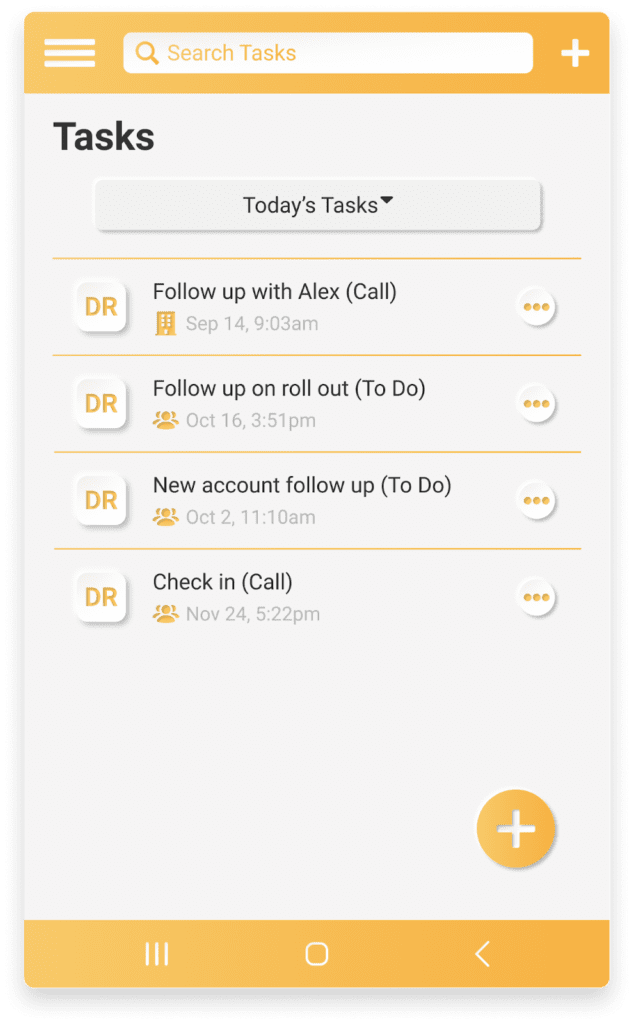
The most successful companies bring tons of value to their market, making it almost a no-brainer for people to buy.
You have to understand the different stages of your sales cycle and how each step is there to benefit both the customer and the business.
5. Know Your Numbers
Last but certainly not least is knowing your numbers (KPIs).
Here are key metrics businesses have to know and understand:
- Customer Lifetime Value (CLV)
- Conversion Rate (Wins)
- Leads
- Drop-off rate
- Customer Churn Rate
Sales reporting is a great way to stay on top of company performance and organize these metrics.
How To Create A CRM Strategy
1. Understand Your Market Fit
Understanding how your product or services fits into the market is exactly how you’ll plan out your messaging and positioning.
This helps you come up with your unique selling proposition (the value you’re offering).
Then once you have that planned out, you can top it off with your company voice — another thing that can make you stand out.
Why do these things matter for CRM?
It’ll easily help your customers understand the value you provide AND make them feel like you’re the company that gets them.
So how can you improve the market fit?
What you’re selling has to be the first thing that’s examined because you could have the best sales team on the planet, but if your product isn’t good…
A) People won’t convert to customers
Or
B) They’ll only be customers for a short amount of time.
Making your product in line with your industry comes down to market research and designing a solution to the problems you find people expressing from your research.
Watching your competitors and improving on what they have to offer is very effective as well.
Once you figure out your market fit — integrate it into your CRM’s messaging to leads and clients.
2. Analyze Current Strategy & Challenges You’re Facing With Customers
With your goals in mind, and your product matching market needs, you now have to find out where the leaks are coming from in your business structure.
Take an audit of how your business is currently handling your sales, marketing, operations, or account management.
If you do not see the results you want, you can take measures to fix the issues.
Think of things like:
Is your team spending too much time on tedious tasks?
Is customer data not being communicated properly with account management?
Are marketing leads not being scored?
These are examples of problems that can be solved with your CRM’s tools.
Lastly, you can use the SWOT (Strengths, Weaknesses, Opportunities, & Threats) analysis framework to help in your analyzing your own business.
3. Use A Robust CRM
A Customer Relationship Management tool is proven to be one of the most valuable investments businesses are making today.
CRMs are known to improve customer retention by as much as 27%.
You get so much more from your CRM when you couple it with your new and improved strategy.
In a sense, your CRM software is part of your strategy, but not the whole thing.
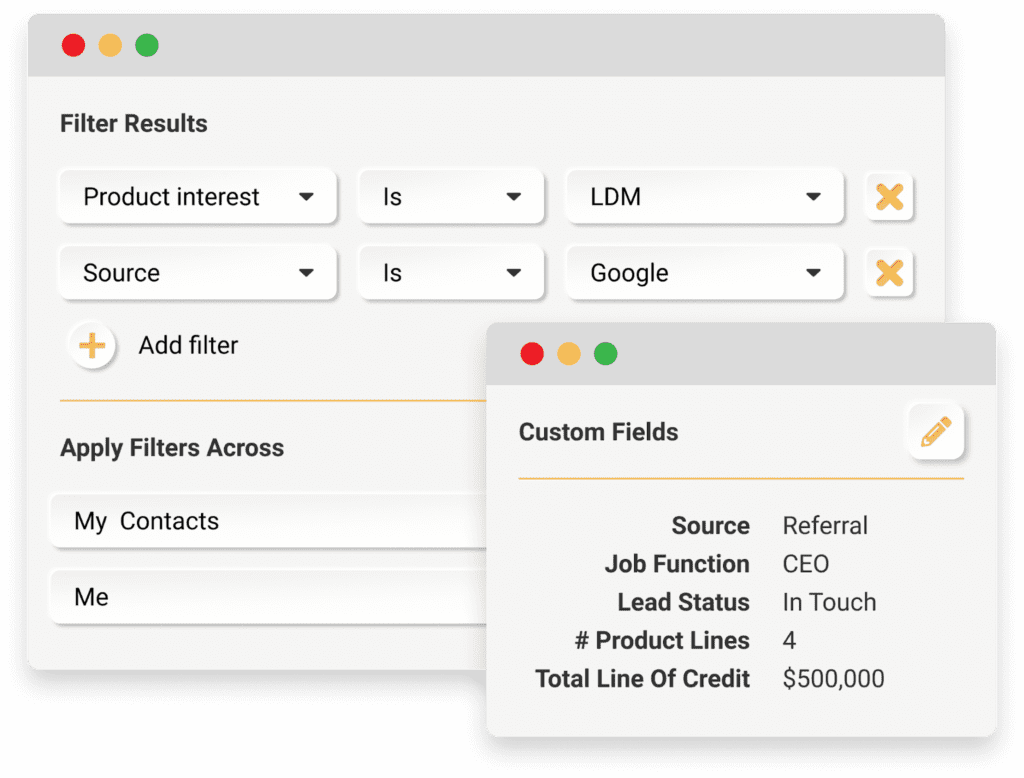
A CRM tool like VipeCloud’s Sales & Marketing Suite gives you an environment to create all the necessary automation, tasks, and marketing you and your team needs.
What’s also great is that you can edit your Suite to match all your business needs. This includes your deals, customer lists, calendars, KPIs and more.
As your strategy changes, so does your CRM tool.
4. Setup Automations To Help Manage Customer Relations
Automation using your CRM tool is what will make your business operation tasks (emails, marketing, calling, texting) more streamlined for your team members and customers.
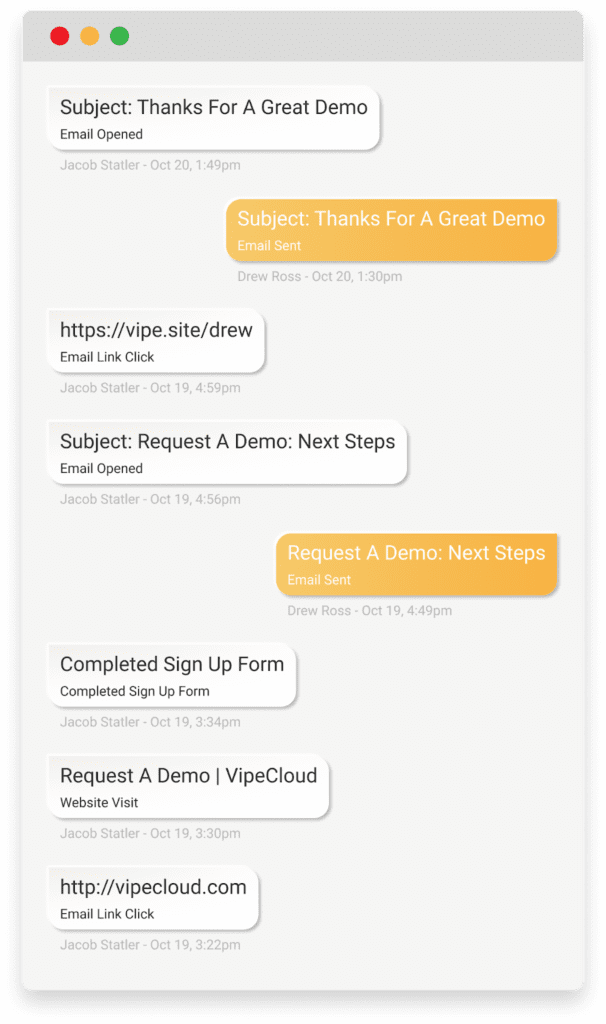
Customers will notice your faster communication and better efficiency and create a positive image of your company.
(Especially if they contrast it with past competitors they’ve worked with, who were slow to get back to them.)
5. Create Definite Dates Of Milestones
Going back to the “T” in S-M-A-R-T goals, your CRM strategy has to be time-based in order for you to see how you’re progressing.
For instance:
When creating your CRM strategy, add monthly, quarterly or yearly milestones that you feel could really light a fire in your team.
Many businesses create competitions amongst different departments to incentivize employees to reach these goals.
Trips, work parties, prizes, you name it.
But that’s just a cherry on top, not a requirement; the real goal here is to have your team all on the same page!
Because once your operations are running smoothly, so will customer results.
17 Must-Use CRM Solutions For The Ultimate CRM Strategy
CRM software usually comes with an array of different features that can streamline your business.
The following 17 VipeCloud features are an all-in-one CRM solution to your sales, marketing, and operations.
Email Newsletters

Email newsletters have become a staple for inbound marketing and lead nurturing.
They can be used to nurture leads from sign up forms or to help your brand stay top-of-mind for current and past clients.
Email Verification
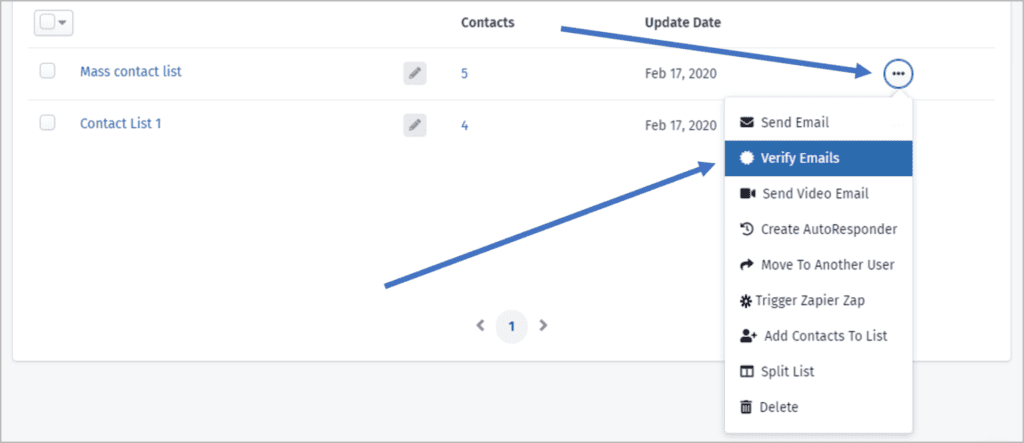
Email marketing has many KPIs.
One of those key KPIs is bounce rate (the rate of which your emails aren’t delivered).
You can’t get email leads if they don’t even get your email in the first place.
So make sure the emails in your email list aren’t risky or undeliverable before sending out a campaign.
Segmentation

Being able to segment your contacts is the key to keeping your messaging as personalized as possible — at scale.
Segment your contacts with important data before launching a marketing campaign.
Sign Up Forms

Sign up forms are an effective way to collect contact info from inbound leads.
Create a sign up form that gives your marketing team the data it needs to properly segment contact lists.
Social Sharing

Your business needs to be present on social media in this day in age.
Scheduling your social media posts is an excellent way to automate a task that can generate leads, build your brand, and stay on the top of prospects’ minds.
Stories

Stories is a unique VipeCloud feature that allows users to create custom stories for social media, email, or anywhere you can send a link.
You can create custom button CTAs that inspire your prospects to take action.
Video Email

Traditional emails are boring and nobody likes reading (let’s be honest).
So instead of sending a lazy text email — spice it up with a custom VipeCloud video. Your prospects, clients, and team will love it.
AutoResponders

Ever got one of the automatic email responses telling you the person you emailed is on vacation?
With VipeCloud, autoresponders can get much more creative and useful than that.
Autoresponders can be used to trigger automatic workflows or be triggered when someone signs up through a signup form.
Lead Generation
Anyone hoping to do effective lead generation needs a CRM.
And unless you want to burn days of your life buried in spreadsheets, you need to invest in an all-in-one lead generation solution.
VipeCloud makes it easy to build out, automate, and streamline your lead generation systems.
And the best part?
You’ll have more personalization with segmentation.
Decrease Data Entry
Manual data entry kills efficiency.
Use CRM automation to reduce tedious tasks — like creating to-do lists and sending emails.
Series

Every operator has repetitive workflows and tasks they have to do on the daily.
Any easy way to automate this?
Create series of workflows to make your business run smoothly.
Configurations
Customizability is crucial to your CRM implementation plan.
You can use VipeCloud to customize your tasks, fields, and pipeline to make it an extension of your business.
Contact Scoring

Do you keep track of how warm your leads are?
If not — then you should. It’s a great way to provide the most relevant marketing to your valuable leads.
Which in turn, leads to more clients.
Integrations
All businesses have a tech stack that they need to run their business.
So it’s important that your CRM can integrate with your tech stack — whether that’s Dropbox, Zapier or through API.
Sales Pipeline
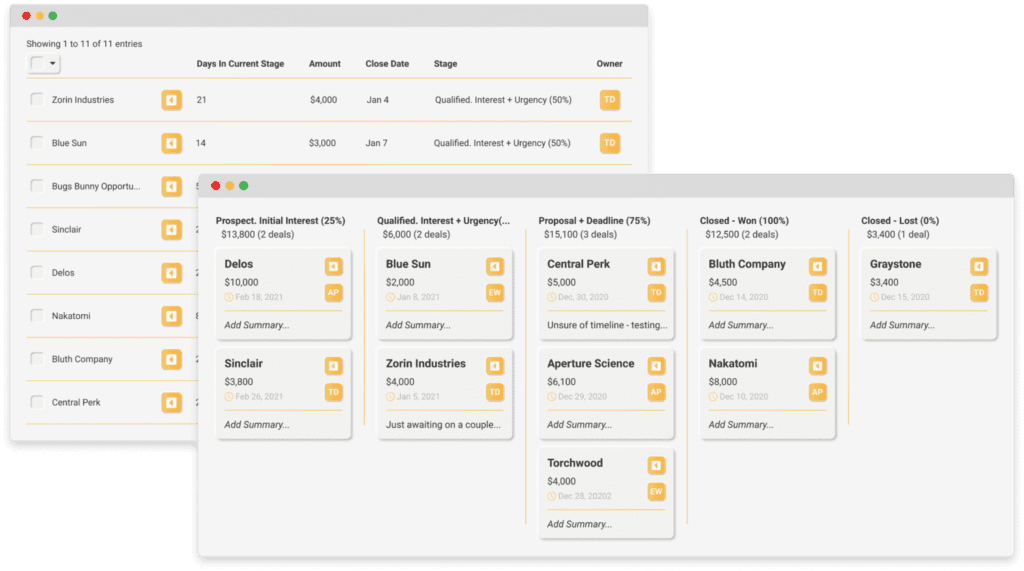
Every business has a pipeline — but keeping track of yours is especially vital if you’re doing B2B sales.
Your pipeline is what brings new life into your MRR.
VipeCloud makes customizing and visualizing your pipeline easy.
Auto Scheduler

If you’re still spending time juggling schedules with team members, clients, and prospects…
Stop!
This task can easily be automated.
Auto scheduling books meetings for you so you can focus on the more important parts of closing deals.
Task Management
Tasks are what every operation in your business needs to work effectively.
There are countless task management software — but the more software you have — the more complicated your techstack gets.
VipeCloud allows you to check off important tasks from within your CRM.
VipeCloud Is The Top CRM For Your New CRM Strategy
A CRM strategy is a bridge between customer needs and company needs.
To successfully make one, you must do an audit of the current state of your business and where you’d like it to be.
From there, you tighten the loose ends and measure how well you’re progressing.
If you’re a small to medium-sized business, you need a CRM that’s tailor-made for your needs, and that falls in line with your CRM strategy.
VipeCloud’s Sales and Marketing Suite helps make your customer-centric sales, marketing, and service delivery bar-none.
Got questions? We’ll demo it for you.

Leave a Reply